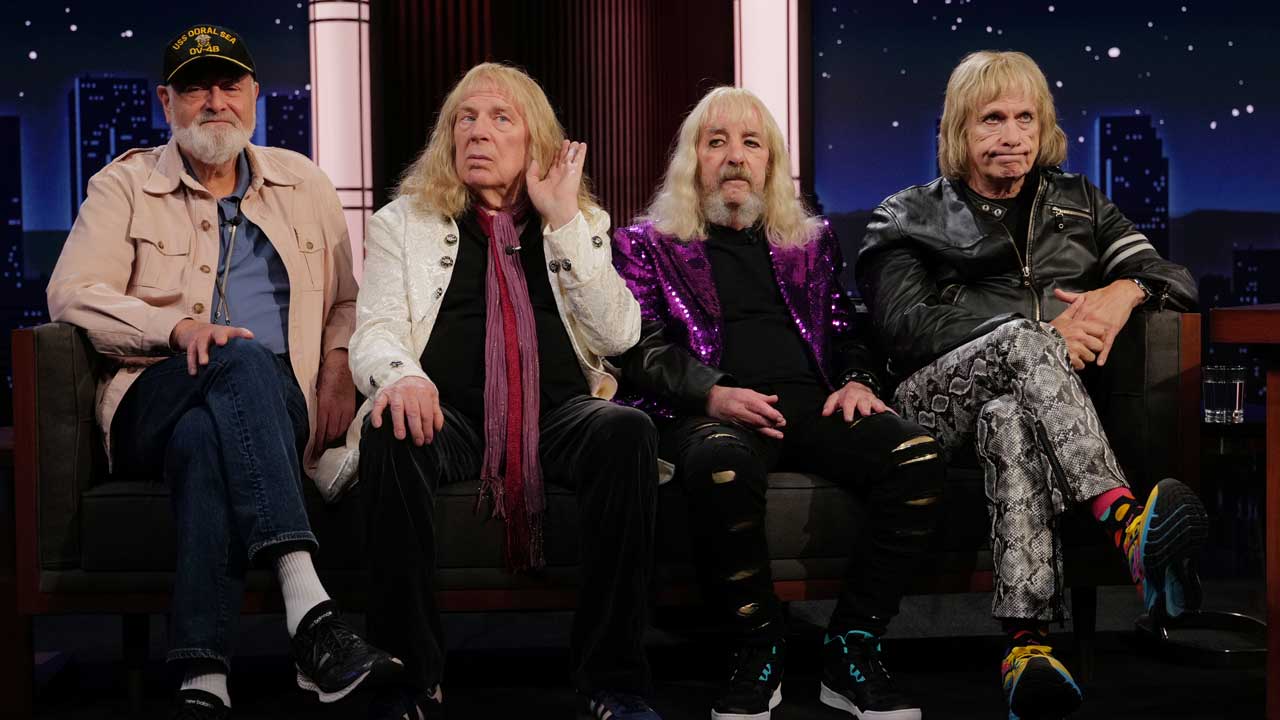Every album by The Who ranked from worst to best
Never the most prolific of bands, The Who have released some of the most enduring and influential albums in rock history
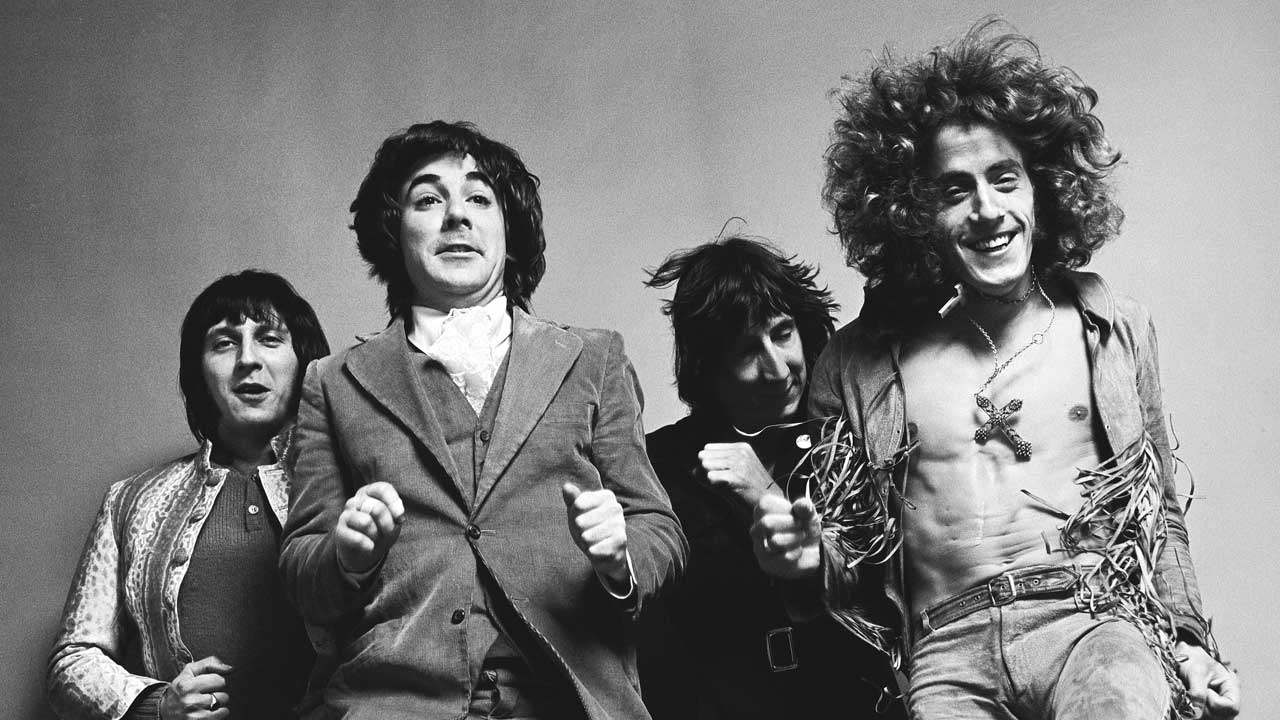
Pete Townshend, Roger Daltrey, John Entwistle and Keith Moon first began touting their maximum r’n’b wares to West London’s pill-blocked mod community in 1964, hammering out James Brown and Slim Harpo covers as The High Numbers.
Their original manager, publicist and self-styled ace face, Pete Meaden was more intent on getting his own name on the songwriting credits of their first single (I’m The Face/Zoot Suit) than looking after the band’s best interests, but when they were picked up by film-makers Chris Stamp and Kit Lambert (lured by Townshend’s penchant for destroying guitars) the latter encouraged the troubled guitarist to compose some original material. Which he did. In abundance. And the rest is history.

17. It’s Hard (1982)
You can trust Louder
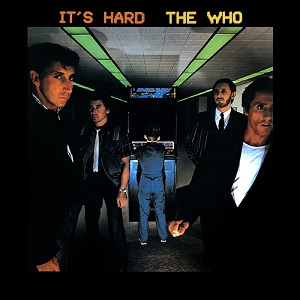
While lead single Athena is insipid, with Pete Townshend at his most inconsequentially self-regarding, the guitar solo-led, groove-driven highlight Eminence Front remains in their live set to this day. Elsewhere the stylish muscle of Roger Daltrey powerhouse I’ve Known No War and epic dynamics of John Entwistle’s Dangerous work in the album’s favour, but Kenney Jones continues to wilfully behave himself.
It’s Hard (their last studio set prior to a 24-year hiatus) is further hobbled by the always debilitating eighties factor. Its contemporary Glyn Johns production sheen lacks teeth and its Tommy-referencing cover documents a midlife style crisis that’s probably best forgotten.
16. Endless Wire (2006)
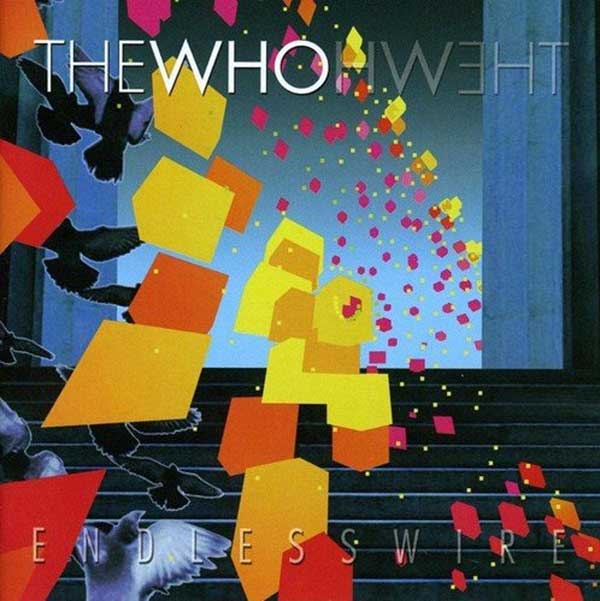
Following their ludicrously extensive two-decade-plus studio lay-off, Roger Daltrey weighs in with muscular vocals that occasionally overshoot the runway while Townshend remains largely introspective. Everything here is fine, but the overwhelming feeling is that none of these songs should ever trouble The Who’s live set. Performances are accomplished, but where’s the fire?
Regular live drummer Zak Starkey, a ten-year veteran unavailable due to touring commitments with Oasis is much missed, but the most keenly felt absence however is that of the late John Entwistle. Respected bass journeyman Pino Paladino is solid, dependable, but the venerable Ox was always going to be utterly irreplaceable.
A Man In A Purple Dress rails against religion, yet there’s no lyrical maturity, and you can’t escape the feeling that Townshend’s better than this. The Wire & Glass mini-opera that lies at the heart of the project is as uneven as it’s technically faultless, and you cannot help but long for Endless Wire’s dependable surgical slickness to be shattered by a spell-breaking fart-at-a-funeral Moony drum fill.
15. Face Dances (1981)

The first post-Moon album finds The Who on surprisingly good form. Occupying the Loon’s position at the rear ex-Faces drummer Kenney Jones faces an impossible task, but his tighter, more concise style focuses Townshend’s songwriting. Daltrey gives a little too much beef to some of the more sensitive material, but Entwistle’s The Quiet One is a highlight that, for a couple of years, replaced My Wife as his live party piece.
Accompanying hit single You Better You Bet might not be Pete’s best work, but it boasts a similarly effective hook to Who Are You. Elsewhere modestly performing second single Don’t Let Go The Coat (again somewhat overcooked by Daltrey) further confirms Towshend’s continuing commitment to both the teachings of Meher Baba and, for the time being at least, sobriety.
14. The Who By Numbers (1975)
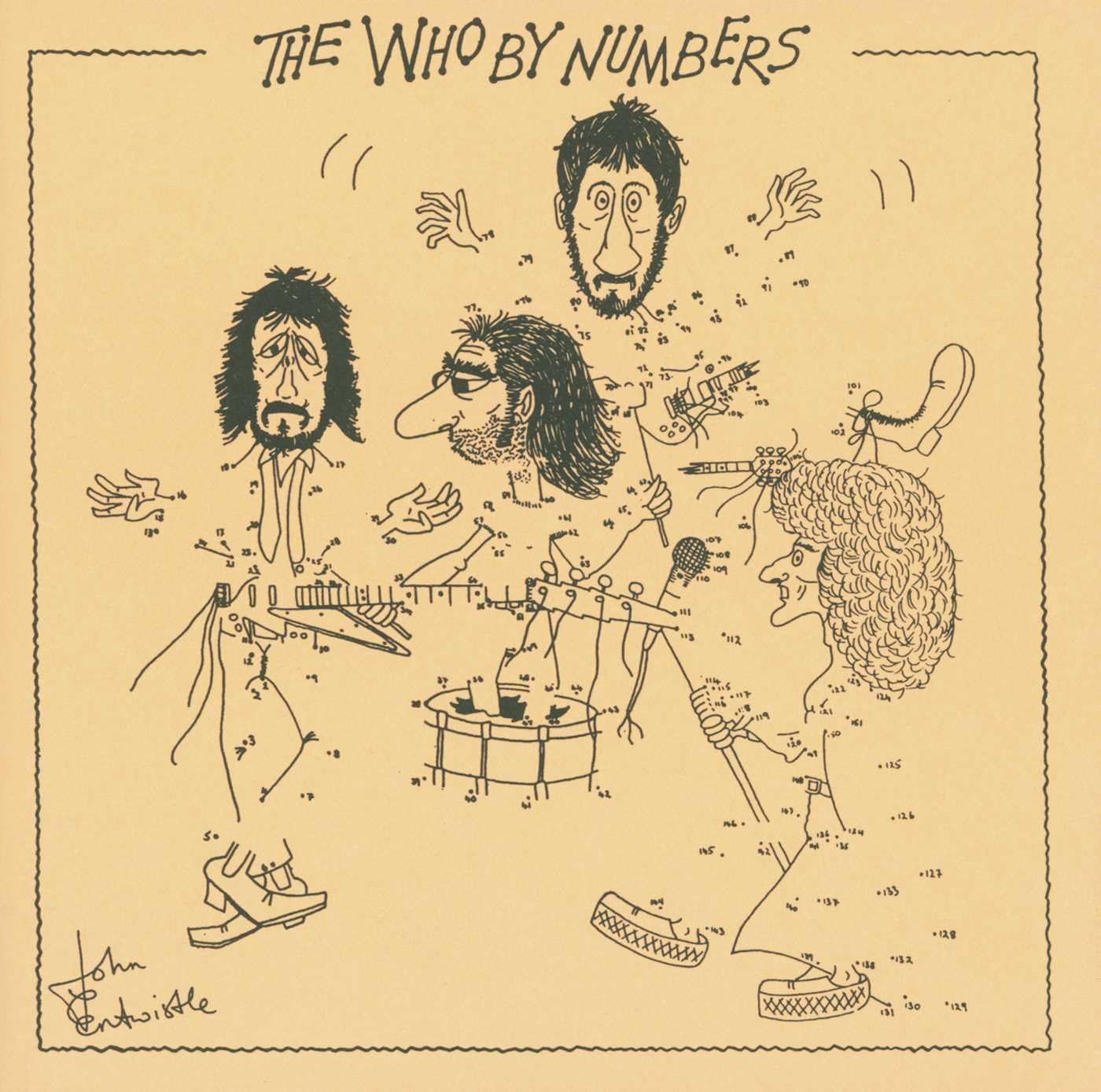
After the high concepts that dominated the band’s output for the previous trilogy of albums, The Who By Numbers’ unpretentious straightforwardness arrived into the directionless pre-punk doldrums as something of a relief.
Kicking off in impressive style with Slip Kid, things rapidly freewheel downhill as Townshend takes his Dr Marten-ed foot way too far off the gas. However Much I Booze swathes the guitarist’s ongoing descent into alcoholism in an inappropriately jolly arrangement, while the seemingly inescapable contemporary jukebox staple Squeeze Box is little more than throwaway, end-of-the-pier fluff.
Where is the Pete Townshend of Lifehouse? Where the architect of Quadrophenia? In 1975 it was a baffling disappointment. And The Who, as they entered their thirties, seemed unbelievably old.
13. Who Are You (1978)

Intoxicated and depressed into ill health and undeniable disinterest, Keith Moon’s lack of form left the band operating at little more than 75% of their potential. Quite literally in the case of Music Must Change from which, uninspired, the debilitated drummer remained entirely absent, save for a handful of cymbal crashes.
Overshadowed by Moon’s death just three weeks after its release, this out-of-time album remains one of Townshend’s most underrated works.
12. Who (2019)

Delivered thirteen years on from its nearest Endless Wire neighbour, Who (recorded with dual gig-toughened safe pairs of hands Zak Starkey on drums and Pino Palladino on bass) is far livelier and worthy of consideration alongside The Who’s finest work than one might reasonably expect. A crucial Townshend-via-Daltrey bullish cantankerousness remains: “I don’t care” spits opener All This Music Must Fade. “I know you’re gonna hate this song”.
Daltrey revels in the experience evident in his seasoned Ball And Chain vocal while session stalwart Palladino exercises his inner Entwistle on Detour. Townshend’s wife Rachel Fuller adds complementary orchestration to Hero Ground Zero, before his brother Simon picks up a credit on acoustic stomper Break The News. Rockin’ In Rage presents a further - final? - instalment of Pete’s ever-fermenting existential angst before a distinctly Iberian She Rocked My World signs off in unexpectedly understated style.
Ultimately, it’s all good, and if it stands (and at this juncture it looks like it will) as the band’s final chapter, it’s more than worthy of their significant legend. And as a final flourish, Who’s deluxe edition has Townshend happily insisting that he’s Got Nothing To Prove in a voice that sounds inexplicably youthful. Until it’s revealed it was originally recorded as a demo in 1966.
11. A Quick One (1966)
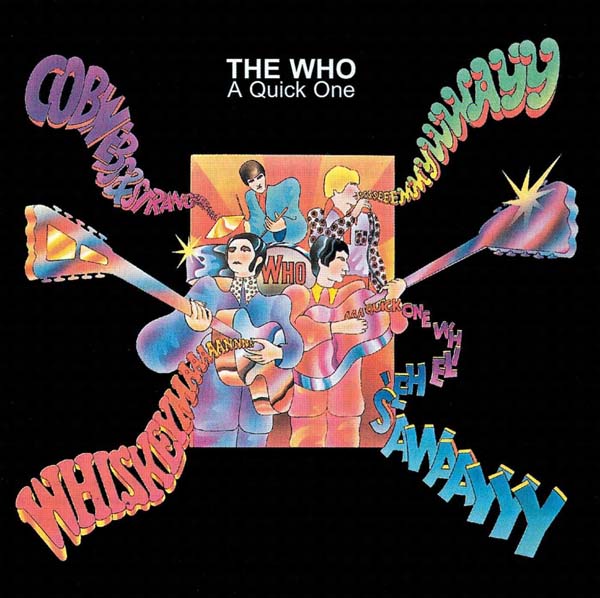
Following on from the time-marking surf-heavy Ready Steady Who EP, The Who’s second album represented almost implausibly rapid progression, and exhibited a far higher level of sophistication to My Generation.
If there’s a slight return to their mod-era dancefloor traditionalism in Townshend’s So Sad About Us, his closing mini-opera A Quick One While He’s Away is almost preposterously ambitious. A multi-part expansion of the kind of linear narratives that were to provide the band with their next brace of singles (Happy Jack, Pictures Of Lily) it hasn’t aged particularly well and sounds significantly more sixth form than La Scala.
10. Odds And Sods (1974)

Just as its title suggests Odds And Sods is a collection of studio floor sweepings but, in this case at least, unreleased need not mean unworthy. Who’s Next-era Long Live Rock – previously sung by a Keith Moon-backed Billy Fury in the David Essex vehicle That’ll Be The Day movie – is absolutely classic ‘orrible ‘Oo in excelsis.
The original Pete Meaden-penned single version of the pre-Who High Numbers’ rework of Slim Harpo’s Got Love If You Want It, I’m The Face (recorded in ‘64 as the b-side to Zoot Suit) is an essential mod artefact and irrefutable album highlight. Essentially compiled to confound bootleggers by a clearly spoiled-for-choice John Entwistle, Odds And Sods is a surprising highlight of the Who’s all too slight seventies output, and a release only deemed more essential by a CD-age doubling of its contents.
9. Live At Leeds (1970)
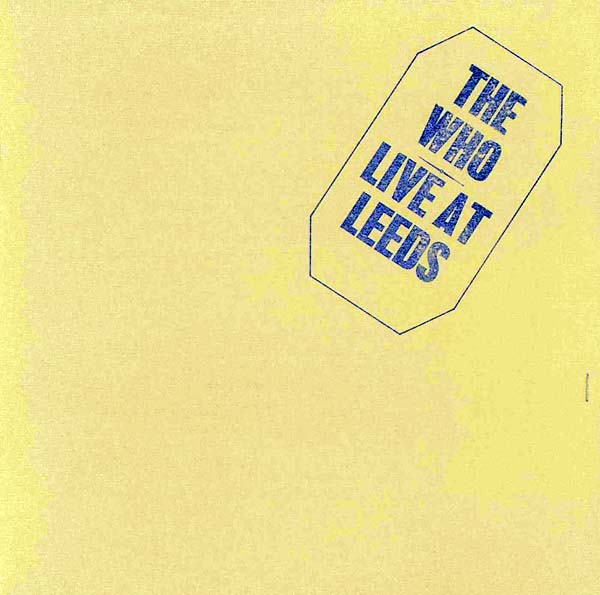
The Who were always a very different band in the live arena and Live At Leeds captures them at their best. Rather than the tightly disciplined studio entity, they’re a loose-limbed, tirelessly extemporising rock machine. Rather than simply duplicating three-minute hits, the vinyl album’s entire second side is split between an elongated improvisation upon My Generation and a similarly expanded version of Magic Bus.
Considered for at least the first five years of its existence to be the ultimate example of the live rock record, Live At Leeds (now vastly expanded for CD) still boasts a rare, feral potency.
8. BBC Sessions (2000)

For pure mod-era distilled adrenaline, you’d have to go a long way to find a better example than the guitar solo captured here on Anyway Anyhow Anywhere. Eye-opening insights into the early Who’s live set come courtesy of spirited frugs through James Brown’s Just You And Me Darling and The Olympics’ Good Lovin’.
Elsewhere, rare Roger Daltrey composition See My Way is significantly perkier in session than in its A Quick One incarnation and, somewhat implausibly, disaffected teen anthem My Generation is rewritten as a perky Radio 1-promoting jingle. With plentiful chart hits reimagined, some of the Odds on here are significantly better than the higher profile Sods corralled elsewhere.
7. The Who Sell Out (1967)

The Who’s third album – recorded soon after their pivotal appearance at the Monterey Festival – was even more ambitious in scope than A Quick One, yet while lauded as a pop art masterpiece on its initial release it hasn’t aged well.
That said, stone-cold classic I Can See For Miles balances out overly contrived one-joke ditties like Odorono and Heinz Baked Beans, Speedy Keen’s Armenia City In The Sky injects psych-era menace (even if it is more Satanic Majesty than Sgt Pepper) while Rael (1 And 2) sounds like a premonitory collage of sketchy snippets from Townshend’s notebooks, even to the extent of offering an early glimpse of Tommy’s Sparks.
A tentative Daltrey is yet to find his voice, there’s way too much growing up in public on display, and for all its courageous intentions it often sounds contrived, hurried and half-formed.
6. The Kids Are Alright (1979)
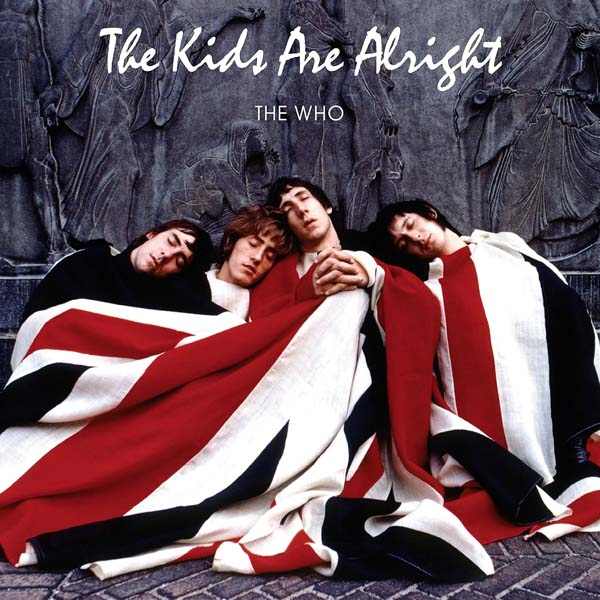
Released to accompany Jeff Stein’s documentary of archive clips, The Kids Are Alright captures some of the band’s greatest performances, not least a titanic final assault on Won’t Get Fooled Again captured during the soon-to-be-late Keith Moon’s swansong appearance at Shepperton Film Studios on May 25th, 1978.
Here also is the band’s show-stealing rendition of A Quick One While He’s Away from The Rolling Stones' ill-fated Rock ‘N’ Roll Circus TV Special of ‘68 and the, quite literally, explosive My Generation detonated during The Smothers Brothers’ Comedy Hour in ‘67 where soon-to-be long-term tinnitus sufferer Townshend is effectively deafened (and has his hair set on fire) when Moon exceeds the prescribed dose of pyro when blowing up his drum kit.
5. My Generation (1965)
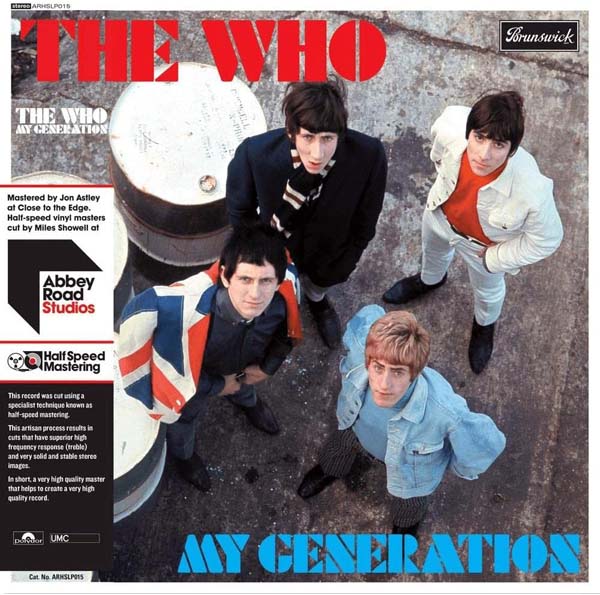
Scattered among a handful of perky, maximum r’n’b covers designed to keep Goldhawk Road modernists leaping, a batch of Townshend originals entirely define their time. None more than the pair recorded in a single session on October 13th, ‘65. The Kids Are Alright and My Generation.
The Who’s intensified, electrified, surf-splashed, pop art-infused over-cranked bludgeoning not only provides a raw template for garage rock, but created a musical landscape within which Jimi Hendrix, Heavy Metal, punk, and therefore, modern rock itself could exist.
Due to a long period of unavailability, My Generation attained mythic status in the mid-seventies as it was widely assumed that every track delivered an equal parent-quaking wallop to its ubiquitous title track. Of course, they don’t, but if they did the album would be good enough to actually kill you.
4. Tommy (1969)
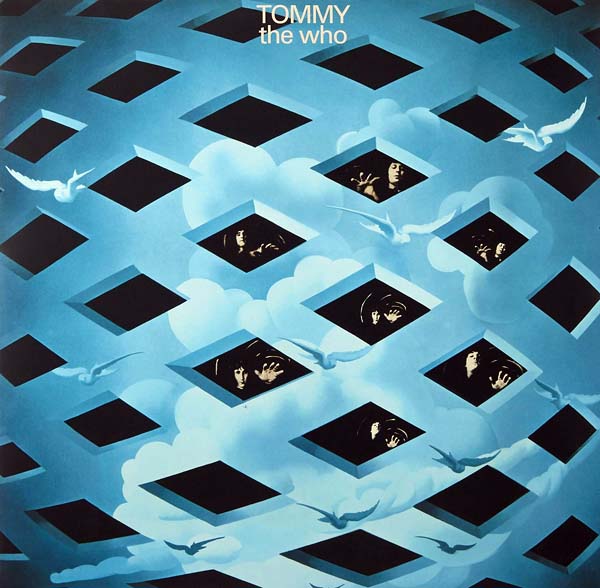
Always more ‘important’ than satisfying, Tommy talks a better game than it delivers. Again produced under enormous pressure, while the band teetered on the brink of onstage auto-destruction hastened bankruptcy (all that smashed gear, much of it hired, racked up king’s ransoms of debt) the creative hothouse of the late sixties demanded back-to-back releases and full-tilt progression as standard.
The band’s instrumental interplay is nothing short of electrifying and Michael McInnerney’s game-changing cover art stunning. Pinball Wizard swiftly captured the public’s imagination and Townshend’s grand, Kit Lambert-encouraged operatic vision gradually came to full fruition in the live arena, saved The Who financially and broadened rock’s scope with an ambitious high concept that brought sixties pop to adulthood and presaged seventies prog.
3. Meaty Beaty Big And Bouncy (1971)

A cornerstone of any early seventies record collection, ‘60s hit compilation Meaty Beaty Big And Bouncy provided irrefutable proof that throughout the previous decade The Who were not just a singles band but one of the world’s best.
Prior to Townshend’s obsession with lengthier operatic works he was the master of the short sharp perfectly formed linear narrative, and the best (Happy Jack, Pictures Of Lily, I’m A Boy) are here, along with mod’s ultimate anthems; I Can’t Explain, Anyway Anyhow Anywhere, Substitute and the totemic My Generation.
2. Who’s Next (1971)

Having ultimately abandoned his long-promised Meher Baba-inspired Lifehouse project, Townshend asset-stripped its constituent parts for Who’s Next, and while it’s tempting to harbour a romantic notion of what could have been, the relative simplicity of a traditional nine-track album setting seems to suit the proposed Lifehouse material perfectly well.
Baba O’Riley and Won’t Get Fooled Again (the latter released in a chart-troubling single edit) stand strong on their own merits and, bookending the album, have come to define the band in their prime. Roger Daltrey’s vocal performance is astonishing. Behind Blue Eyes seems to serve as signature piece for both Daltrey and Townshend, while Entwistle’s My Wife blazes with cannily deployed brass.
A vast evolutionary leap forward that set the band’s reputation in stone as one of rock’s very best.
1. Quadrophenia (1973)

The band are on fire. The ensemble interplay that accompanies Roger Daltrey’s bullish. career-topping vocal performance is only ever stunning. Quadrophenia is Townshend’s masterpiece, his most convincing and engaging rock opera by some distance. Based in mod though eternally relevant, it’s bolstered by a vast, cinematic production and is utterly huge in every given sense of the word: in vision, scope, concept and enduring influence.
The Real Me, Doctor Jimmy, Love Reign O’er Me, Bell Boy, 5.15; compositions that don’t just represent The Who at their best, but rock at its best. Townshend’s writing has matured almost beyond recognition - even since Tommy - and considering that he’s progressed from I Can’t Explain’s surly proto-punk inarticulacy to a work of such depth, sophistication, magnitude and brilliance in under a decade is astonishing.
Quadrophenia then, a standout album from a standout year, an undiminished juggernaut of epic proportions. Rock really doesn’t get any more classic than this.

Classic Rock’s Reviews Editor for the last 20 years, Ian stapled his first fanzine in 1977. Since misspending his youth by way of ‘research’ his work has also appeared in such publications as Metal Hammer, Prog, NME, Uncut, Kerrang!, VOX, The Face, The Guardian, Total Guitar, Guitarist, Electronic Sound, Record Collector and across the internet. Permanently buried under mountains of recorded media, ears ringing from a lifetime of gigs, he enjoys nothing more than recreationally throttling a guitar and following a baptism of punk fire has played in bands for 45 years, releasing recordings via Esoteric Antenna and Cleopatra Records.
